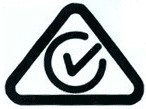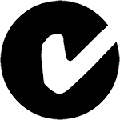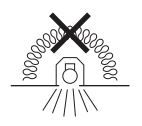FAQ - LED Lighting Standards
Solid State Lighting Performance Standards
Australian Energy and Lighting Programs
US Energy and Lighting Programs
Incandescent Equivalence Claim
International Safety Standards
Safety Approvals and Compliance
Luminaire Specific Safety Standards
DIY Electrical Work and Australian Law
DIY Electrical Work and US Law
Background
The standards applied to Solid State Lighting vary across countries, continuing to evolve as the technology matures. As a relatively new technology, many countries, including Australia and various european countries, have not established their own set of standards for LED lighting products and have adopted the safety and performance standards defined by the International Electrotechnical Commission (IEC), detailed in IEC 62031, IEC 62612, IEC/PAS 62722 and IEC/PAS 62717. A detailed guide to all LED related standards is available from www.lightingeurope.org.
The IEC specifications take the form of recommendations for international use, the conformity to which are certified by independent certification bodies. The test methods specified for the measurement of photometric and colorimetric data were developed by national and international industry bodies including IESNA (Illumination Engineering Society of North America) and the CIE (International Commission on Illumination). These testing methodology standards are detailed in IES LM-79-08, IES LM-80-08 and CIE 84:1989.
To supplement the international LED standards defined by the IEC, many countries have introduced government programs to further regulate marketing and manufacture of the technology. This is due to the fact that despite many SSL products demonstrating excellent performance and fulfilling their advertised specifications, there are a great deal of low quality products still on the market that are falling far short of their claims; undermining consumer confidence and compromising public perception of the new technology.
The purpose of programs such as lighting facts, Solid State Lighting Quality Scheme, and ENERGY STAR®, is to facilitate fair product comparisons and promote SSL as a reliable and energy efficient technology. All the aforementioned programs rely on performance and safety measurements obtained through approved third-party testing based on the the photometric and colorimetric test methods specified by IESNA and the CIE.
Solid State Lighting Performance Standards
The testing methodologies for LED performance are defined in standards developed by IESNA. Performance characteristics include photometric and colorimetric properties, LED lifetime and lumen maintenance. IES LM-79-2008 Approved Method for the Electrical and Photometric Testing of Solid-State Lighting Devices provides specific testing guidelines for measurement of lumen output and luminous efficacy. IES LM-80-2008, Approved Method for Measuring Lumen Depreciation of LED Light Sources, specifies the method of data collection for calculation of LED lumen maintenance however it does not define an actual method for useful life estimation and is limited in scope to light sources, i.e. LED arrays and modules, rather than luminaires. A separate standard for the lumen maintenance estimation method, IES TM-21-2011 Projecting Long Term Lumen Maintenance of LED Light Sources, based on IES LM-80-2008 testing is currently in development. IES LM-84 Method for Measuring Lumen Maintenance of LED Lamps, Light Engines, and Luminaires and IES TM-28 Prediction of Lumen Maintenance of LED Lamps and Luminaires, two more standards being developed, will extend projection of useful lamp life to the luminaire level, incorporating system factors such as thermal management.
While lumen maintenance is an important factor in the projected life of an SSL product, it is by no means the only determinant. Manufacturers often cite lumen maintenance figures ranging from 20,000 to 50,000 hours as the lifespan in their product specifications. This is often misconstrued as being the expected lifespan of the entire product, rather than the rated period of useful light output of the source. The introduction of the standards mentioned above will address the issue of lumen and colour maintenance for luminaires and an IES standard for reliability tests is planned, however no standards currently exist for the estimation of an LED product's lifetime from failure modes other than lumen depreciation. The lifespan quoted in manufacturer specifications therefore gives no indication of a product's overall reliability, which is still best gauged from the manufacturer's warranty period.
Australian Energy and Lighting Programs
Australia's adoption of the United States ENERGY STAR® program does not yet extend to LED lighting products. The Lighting Council of Australia has introduced the SSL Quality Scheme, a voluntary scheme based on the US Department of Energy's 'Lighting Facts' program. Products by manufacturers participating in the scheme will carry the SSL Quality Scheme Label, which specifies Luminous flux (light output), luminous efficacy, input power, CCT and CRI. Products using the SSL Quality Scheme Label are required to provide a certificate of compliance for the driver, further ensuring the safety and quality of the product. A data base of participating manufacturers and their products is maintained on the Lighting council of Australia website.
US Energy and Lighting Programs
The ENERGY STAR® program is a U.S. Environmental Protection Agency voluntary program. It sets a minimum performance level for qualifying SSL products based on energy efficiency and reliability. Products that applied for energy star certification and were proven to meet the EPA's benchmarks for SSL Luminaires through third-party testing carry the ENERGY STAR® label. Eligibility criteria for the program is summarised in this ENERGY STAR® document.
The U.S. Department of Energy's LED Lighting Facts program is another Market-Based voluntary program aimed at regulating SSL product quality. Unlike the ENERGY STAR® program, which maintains minimum performance benchmarks for certification, LED Lighting Facts is aimed at summarising key performance data for straight forward SSL product evaluation. Participating manufacturers use the LED lighting facts label on their products to specify light output, watts, efficacy, CCT, and CRI. A public database of LED lighting facts products is also available on their website.
Incandescent Equivalence Claims
Many LED lighting products are sold advertising an equivalence to incandescent lights of various wattages. As there is currently no MEPS (Minimum Energy Performance Standard) specified for LED lighting and the lumen output of common incandescent globes are not common knowledge, these claims often fall short of customer expectations. As a guide, the minimum lumen output for incandescent equivalence claims specified by ENERGY STAR® in their Program Requirements for Integral LED Lamps document is included below:
| Nominal wattage of lamp to be replaced (watts) | Minimum initial light output of LED lamp (lumens) |
|---|---|
| 25 | 200 |
| 35 | 325 |
| 40 | 450 |
| 60 | 800 |
| 75 | 1,100 |
| 100 | 1,600 |
| 125 | 2,000 |
| 150 | 2,600 |
International Safety Standards
The IEC have developed standards specific to LED lighting. IEC 62560 safety specifications detail mandatory markings, construction safeguards, minimum resistance to hazard sources and operation under fault conditions. Compliance to IEC 62560 can be inferred by CE or UL ceritification in combination with the markings on the lamp product. According to the IEC 62560 mandatory markings include a mark of origin such as a trademark or manufacturer/distributor name, rated voltage or voltage range, rated wattage and rated frequency. LED lights not suitable for dimmer circuits are required to indicate this clearly in installation instructions or package labelling. A compliance claim to the standard IEC 62560 is the minimum indication of a safe LED-lamp for general lighting purposes.
Australian Safety Standards
 An Australian adoption of LED-specific international standard IEC 62560 is currently being drafted. In the
mean time, LED lighting products fall under the general safety standards for electrical equipment and luminaires.
Electrical safety requirements are fragmented across the different states. The main standard is now
the Electrical Equipment Safety System (EESS). The Electrical Regulatory Authorities Council (ERAC)
coordinates the EESS activities across Australia, with the exception of NSW, to ensure consistency across the
states. The EESS requires the use of the Regulatory Compliance Mark label (RCM) on electrical and
electronic equipment
in accordance with the labeling rules laid out in AS/NZS 4417.
An Australian adoption of LED-specific international standard IEC 62560 is currently being drafted. In the
mean time, LED lighting products fall under the general safety standards for electrical equipment and luminaires.
Electrical safety requirements are fragmented across the different states. The main standard is now
the Electrical Equipment Safety System (EESS). The Electrical Regulatory Authorities Council (ERAC)
coordinates the EESS activities across Australia, with the exception of NSW, to ensure consistency across the
states. The EESS requires the use of the Regulatory Compliance Mark label (RCM) on electrical and
electronic equipment
in accordance with the labeling rules laid out in AS/NZS 4417.
 In contrast to the C tick mark, which only indicates EMC compliance, the RCM label indicates EMC
compliance as well as electrical safety approval. As of September 2013, the EESS requires that all
electrical equipment supply companies register on its national database and by doing so, declare that
the products they have placed on the Australian market is safe. All new products as of March 2013 are
required to carry the Regulatory Compliance Mark in place of the Electrical Safety Approval
Number, C-Tick or A-Tick. The labelling of existing products remains voluntary
until March 2016.
In contrast to the C tick mark, which only indicates EMC compliance, the RCM label indicates EMC
compliance as well as electrical safety approval. As of September 2013, the EESS requires that all
electrical equipment supply companies register on its national database and by doing so, declare that
the products they have placed on the Australian market is safe. All new products as of March 2013 are
required to carry the Regulatory Compliance Mark in place of the Electrical Safety Approval
Number, C-Tick or A-Tick. The labelling of existing products remains voluntary
until March 2016.
New South Wales is the only Australian state not participating in the EESS program. The necessary electrical safety approvals are determined by the NSW department of fair trading, who administer the provisions of the Electricity (Consumer Safety) Act 2004 and the Electricity (Consumer Safety) Regulation 2006 which covers the sale of mains supplied electrical appliances and equipment.
LED lighting products are included as a declared article in the NSW fair trading document Electrical appliances and equipment requirements for their sale in NSW, which specifies the relevant IEC safety standards. Acceptable electrical safety approval marks for sale in NSW are detailed on the NSW government fair trading website. Retailers and importers selling unmarked or unapproved electrical goods can be fined or imprisoned.
The Current State of Safety Approvals and Compliance
The current system of electrical safety and EMC has several flaws that limits it's efficacy:
- In many cases suppliers can self-certify to get a C-Tick label, limiting the credibility of the mark.
- There is no government enforcement, audits or prosecutions for false claims.
- There is no publicly accessible database available to verify C-Tick numbers.
- C-Tick testing is only in the 30 Mhz to 300 Mhz range; it therefore does not cover all the TV frequencies or other services, such as WiFi interference at 2.4 GHz and 5 GHz.
- A few private safety approval testing companies, including SAA, seem to have partial databases with partial data, however not enough to carry out any type of comprehensive survey of compliance.
- There is no ongoing testing of samples. Certain overseas manufacturers have been known to provide 'golden' samples for testing, while providing cheaper, lower quality units for sale to the public.
As most Australian states make the transition to the Electrical Equipment Safety System and the RCM, some of these problems are expected to be resolved. At the time of writing this article, the EESS national database is not yet active. In the interim, use of the RCM is permitted to responsible suppliers registered on the EESS registered database, the equipment concerned does not need to be registered.
Luminaire Specific Safety Standards
Although Australia is still in the process of adopting LED-specific standards such as IEC 62560, standards for luminaires are currently in place and being further developed in view of the new technology. AS/NZS 60598 Luminaires delineates mandatory markings, construction specifications, minimum resistance to hazard sources and electrical connections requirements for luminaires.
Lamp control gear
While AS/NZS 61347.2.13 Particular requirements for d.c or a.c supplied electronic controlgear for LED modules is currently being drafted, AS/NZS 61347.1 Lamp controlgear Part 1: General and safety requirements applies to the controlgear of SSL products with DC supplies < 250 V and/or AC supplies < 1000 V at 50 Hz or 60 Hz. Controlgear refers to the electronics used for transforming the supply voltage or limiting the current to the lighting module, covering the drivers, electronic ballasts, and electronics integrated into the luminaire. AS/NZS 61347.1 specifies the mandatory markings, construction safeguards, minimum resistance to hazard sources and operation under fault conditions for general lamp controlgear. In addition the associated luminaire must be compliant with the applicable part 2 specification of AS/NZS 60598.
Downlight Installation
Recessed luminaires, better known as downlights, have stringent installation requirements specified by AS/NZS 3000:2007 to prevent excessive temperature rise of the luminaire and possible ignition of combustible materials. The following compliance methods apply for downlight installation in regards to insulation and combustible materials:
(i) If the manufacturer recommends and certifies operation of the luminaire in this condition,
installing the luminaire in contact with or enclosed by combustible materials/thermal insulation material is permitted.
Suitable products must carry the Insulating Ceiling F mark 
(ii) A luminaire and luminaire barrier combination in compliance with AS/NZS 5110:2011
(iii) Observance of either clearances set by the manufacturer or the default clearances stated in
AS/NZS 3000:2007. A physical guard is in place where insulation materials
are not fixed in place.
Luminaire Barriers

DIY Electrical Work and Australian Law
In Australia, it is against the law for persons other than licensed electricians to perform electrical wiring work. The NSW Electricity (Consumer Safety) Act 2004 defines electrical wiring work as "the actual physical work of installing, repairing, altering, removing or adding to an electrical installation or the supervising of that work", where an electrical installation "means any fixed appliances, wires, fittings, apparatus or other electrical equipment" not including electrical articles connected to or situated beyond any electrical outlet socket or any electrical equipment operating below 50 VAC or 120 V ripple-free DC.
Australian EMC Standards
LED light globes and their transformers contain electronics which can emit radio noise. This noise can interfere with the correct operation of other devices and disturb radio and television reception.
As of February 2013, switch mode power supply products including electronic transformers, LED lamps, ballasts and drivers are subject to mandatory compliance with CISPR 15 Limits and methods of measurement of radio disturbance characteristics of electrical lighting and similar equipment. The standard specifies maximum radiated disturbance limits in the 30-300 MHz range for a given measuring distance. Markings including the RCM label and the C-Tick mark indicate EMC compliance.
US Safety Standards
Minimum safety requirements for SSL components and products are specified by the UL 8750 Standard for LED Equipment for Use in Lighting Products, developed by Underwriters Laboratories Inc. (UL). Integrated lamps for sale in the US must bear a mark from a Nationally Recognized Testing Laboratory (NRTL) indicating compliance with the safety regulations outlined in UL 1993 and UL 8750.
DIY Electrical Work and US Law
In the United States, electrical code requirements vary from state to state. Some states do not hold certain types of electrical work, such as work in one and two family dwellings or work performed by homeowners on their own property, liable to electrical codes and licensing requirements.
Referenced Standards
- IEC 62031 LED Modules for General Lighting - Safety Specifications
- IEC 62612 Self-ballasted LED lamps for general lighting services with supply voltages > 50 V - Performance Requirements
- IEC/PAS 62722 LED luminaires for general lighting - Performance requirements (Publicly available specification)
- IEC/PAS 62717 LED modules for general lighting - Performance requirements (Publicly available specification)
- IEC 62560 Self-ballasted LED-lamps for general lighting services by voltage > 50 V - Safety Specifications
- CIE 84:1989 Measurement of luminous flux
- IES LM-79-2008 Approved Method: Electrical and photometric measurements of solid-state lighting products
- IES LM-80-2008 Approved Method: Measuring lumen maintenance of LED light sources
- IES TM-21-2011 Projecting Long Term Lumen Maintenance of LED Light Sources
- IES LM-80 Method for Measuring Lumen Maintenance of LED Lamps, Light Engines, and Luminaires
- IES TM-28 Prediction of Lumen Maintenance of LED Lamps and Luminaires
- AS/NZS 4417:2012 Regulatory compliance mark for electrical and electronic equipment
- AS/NZS CISPR 15:2011 Limits and methods of measurement of radio disturbance and characteristics of electrical lighting and similar equipment
- AS/NZS 60598.1:2003 Luminaires Part 1: General requirements and tests
- AS/NZS 613471.1:2002 Lamp controlgear Part 1: General and safety requirements
- AS/NZS 5110:2011 Recessed luminaire barriers
- AS/NZS 3000:2007 Electrical installations (known as the Australian/New Zealand Wiring Rules)
- UL 8750 Standard for LED equipment for use in lighting products
- UL 1993 Self-ballasted lamps and lamp adapters
Related Pages
- What to look for in an LED light?
- What makes a good incandescent/halogen replacement?
- Do LED lights cause radio interference?
Back to FAQ index